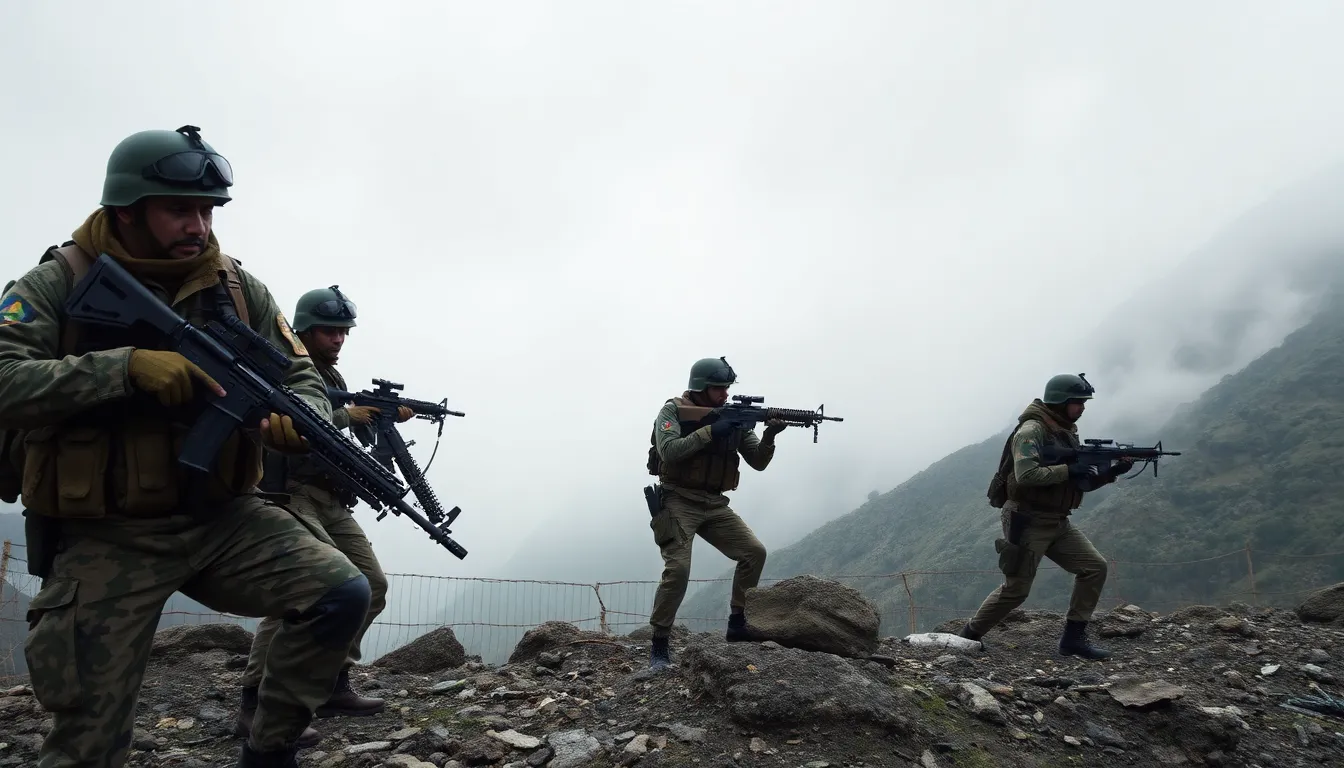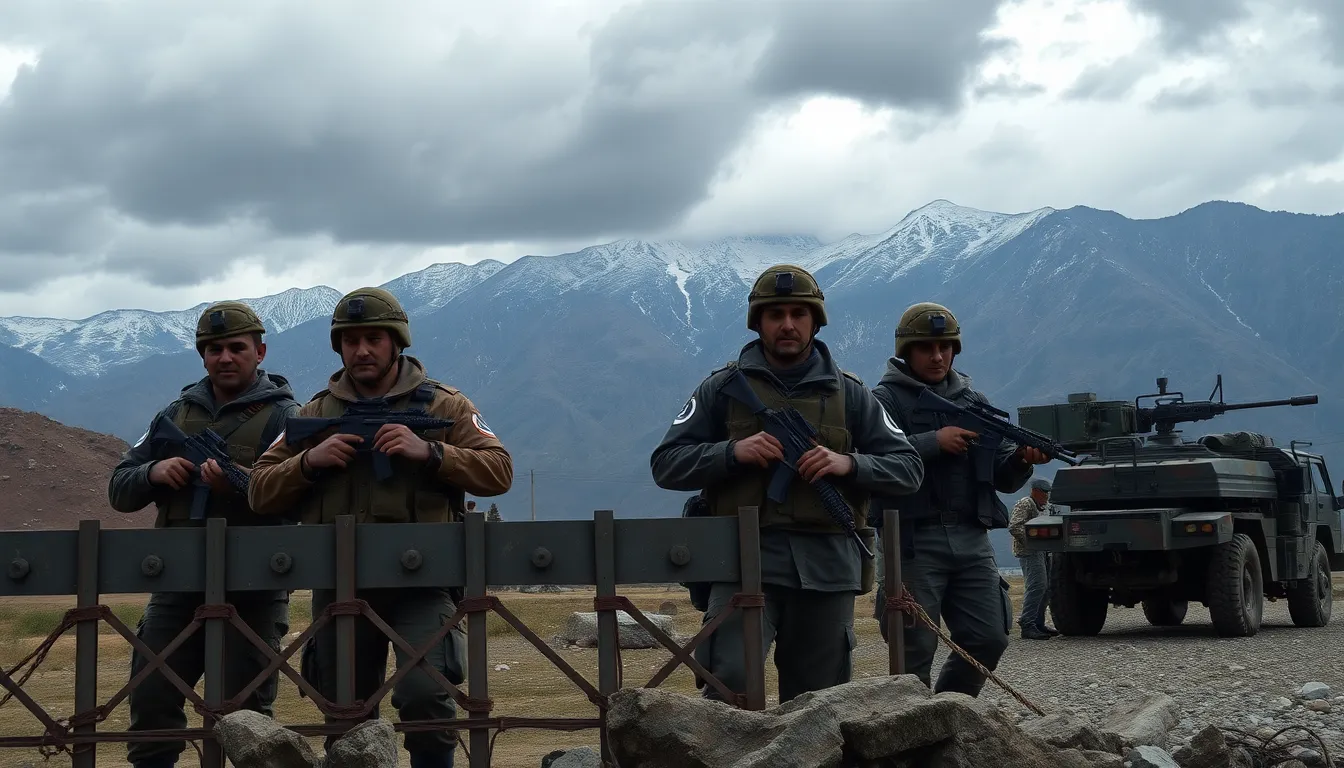As tensions simmer between India and Pakistan, the prospect of conflict looms larger than ever. The geopolitical landscape is shifting, and both nations find themselves at a critical juncture. With military posturing and diplomatic maneuvers intensifying, the world watches closely as May 2025 approaches.
Recent developments suggest that the possibility of war is not just a distant threat but a pressing reality. Analysts are closely monitoring troop deployments and strategic alliances, raising concerns about the implications for regional stability. The stakes are high, and understanding the factors at play is essential for grasping the potential outcomes of this unfolding situation.
Table of Contents
ToggleOverview of the India Pakistan War May 2025 News
The India-Pakistan conflict continues to evolve, with notable developments reported in May 2025. Increased military presence along the Line of Control signifies heightened tensions. Both nations have mobilized troops in critical areas, indicating a readiness for potential escalations. Analysts observe that airspace violations and skirmishes have become more frequent, prompting concerns regarding a full-scale military confrontation.
Diplomatic channels remain strained, as negotiations fail to yield meaningful results. Recent summits between India and Pakistan yielded little progress, with positions on key issues remaining polarized. The Kashmir region remains a focal point of contention, influencing both countries’ military strategies.
International observers emphasize the significance of external influences. China’s support for Pakistan and the US’s strategic partnership with India complicate the geopolitical landscape. Economic sanctions and military aid from global powers continue affecting regional dynamics.
Media coverage highlights public sentiment in both nations, revealing strong nationalist sentiments shaping governmental actions. Citizens express a mix of fear and patriotism, influencing political decisions and military strategies. The situation remains fluid, with developments expected to shape the geopolitical narrative as May 2025 progresses.
Key Events Leading to the Conflict

As May 2025 approaches, several key events have escalated tensions between India and Pakistan, driving the likelihood of conflict. Understanding these developments provides clarity on the current situation.
Political Tensions
Political disagreements have intensified, particularly over the Kashmir region. Statements from leaders of both nations reflect rising hostility, with Pakistan alleging human rights violations by India. India, in response, emphasizes its sovereignty over Kashmir, portraying military actions as essential for national security. Diplomatic engagements have yielded minimal results, with each nation maintaining a hardline stance that fosters insecurity and mistrust. Nationalistic rhetoric further aggravates the situation, as public support for military action grows in both countries.
Military Buildup
Military activities along the Line of Control have surged dramatically. India has deployed additional troops and advanced weaponry, focusing on strategic positions to deter any potential incursions. Pakistan responds with similar troop mobilizations, enhancing its defensive capabilities. Recent reports indicate an increase in aerial patrols and artillery deployments, suggesting preparations for conflict. Cross-border skirmishes and airspace violations, often reported in recent weeks, raise alarms about unintended escalations that could ignite a larger military confrontation. Both nations remain on high alert, increasing the stakes in this volatile environment.
Major Developments During the War
As the conflict intensifies, several key developments have shaped the war landscape between India and Pakistan. Here’s an overview of significant battles and international reactions during this critical period.
Significant Battles
- Battle of Uri: Fought in early May 2025, this battle marked a major escalation. Indian forces launched a surprise offensive, targeting strategic positions along the Line of Control. Reports indicate heavy casualties on both sides, prompting international calls for restraint.
- Airstrikes over Lahore: In mid-May, India conducted airstrikes against military installations in Lahore. This operation, targeting missile launch sites, aimed to diminish Pakistan’s retaliatory capabilities. Intelligence assessments suggest the strikes achieved their tactical objectives but heightened retaliatory threats from Pakistan.
- Naval Engagement in the Arabian Sea: Later in May, naval forces engaged in skirmishes in the Arabian Sea. Both navies deployed advanced warships, with reports of exchanges between vessels. This engagement underscores the conflict’s expansion beyond land and air domains, raising maritime security concerns.
- Kashmir Offensive: A significant ground operation commenced near Kashmir’s border, where both countries concentrated their military resources. Analysts note an unprecedented level of troop mobilization, indicating both nations’ commitment to securing territorial claims in the region.
International Reactions
- United States: The U.S. has called for immediate de-escalation, urging both nations to adhere to diplomatic solutions. Reports from the State Department highlight the country’s concern about a potential humanitarian crisis, given the range of civilian impacts from ongoing military actions.
- China’s Support for Pakistan: China expressed unwavering support for Pakistan, emphasizing the need for territorial integrity. Analysts observe an increase in joint military exercises, demonstrating Beijing’s strategic alignment with Islamabad amid the conflict.
- United Nations Intervention: The UN Security Council held emergency sessions to address the escalating situation. Resolutions urging both India and Pakistan to resume dialogue received limited support, reflecting deep divisions among member states regarding the Kashmir issue.
- Regional Reactions: Neighboring countries remain apprehensive. Afghanistan condemned both sides, advocating for peaceful resolutions to prevent spillover effects. Bangladesh and other South Asian nations emphasize the need for unity and dialogue to mitigate regional tensions.
These developments illustrate the multidimensional aspects of the India-Pakistan conflict in May 2025, significantly influencing the regional geopolitical landscape.
Humanitarian Impact
The humanitarian impact of the escalating India-Pakistan conflict in May 2025 is profound. Civilian populations bear the brunt of military confrontations, leading to significant humanitarian challenges.
Civilian Casualties
Civilian casualties have surged due to increased military operations. Reports indicate that over 500 civilians sustained injuries in conflict zones since May 2025 began. Both sides have conducted bombardments, resulting in deaths of non-combatants, with estimates reaching 200 fatalities. Health services struggle to manage the influx of wounded, facing shortages of medical supplies and staff. Continuous shelling disrupts access to hospitals, complicating emergency care for victims. The targeting of infrastructure further exacerbates conditions, leaving many without access to clean water and electricity.
Refugee Crisis
A refugee crisis is unfolding as civilians flee conflict zones. An estimated 150,000 people have displaced from areas near the Line of Control, seeking safety in neighboring regions. Temporary camps lack sufficient shelter, sanitation, and food supplies, leading to dire living conditions. Aid organizations report that families face food insecurity, with many relying on limited humanitarian assistance for survival. The increased number of displaced individuals strains local resources, prompting calls for international aid. Governments and NGOs work tirelessly to address immediate needs but struggle to meet the scale of the crisis.
Analysis of Strategic Implications
The current India-Pakistan conflict presents significant strategic implications for both regional and global stability. Understanding these dynamics is crucial as tensions escalate.
Regional Stability
Regional stability is at risk as military posturing intensifies along the Line of Control. India’s increased troop deployments and advanced weapons systems heighten the likelihood of armed confrontation. Reports indicate that Pakistan has fortified its defensive capabilities in response, leading to an arms buildup on both sides. Frequent skirmishes and airspace violations further contribute to a volatile atmosphere. Neighboring countries closely monitor developments, fearing spillover effects that could destabilize South Asia. The rise of nationalistic rhetoric in both countries fosters public support for military actions, exacerbating prospects for peace.
Global Geopolitical Consequences
The India-Pakistan war carries profound global implications. China’s unwavering support for Pakistan contrasts sharply with the United States’ strategic alliance with India, shaping international responses. Sanctions from powerful nations and geopolitical alliances influence both countries’ actions, complicating diplomatic negotiations. Recent military engagements have drawn international scrutiny, prompting calls for intervention from various global actors. The humanitarian crisis resulting from the conflict also captures the attention of international organizations, emphasizing the need for broader, coordinated responses. As tensions persist, the global community must assess the potential for wider conflicts that transcend the region.
The situation between India and Pakistan in May 2025 remains precarious and fraught with tension. As both nations continue to mobilize troops and engage in military posturing the risk of escalation looms large. The humanitarian crisis is deepening with civilian casualties rising and displacement becoming a pressing issue.
International reactions underscore the urgency of the situation as global powers navigate their interests in the region. The complexities of alliances and the historical grievances surrounding Kashmir amplify the challenges in seeking a peaceful resolution.
As developments unfold the world watches closely hoping for de-escalation and a return to dialogue. The stakes are high not just for India and Pakistan but for regional stability and global peace.




